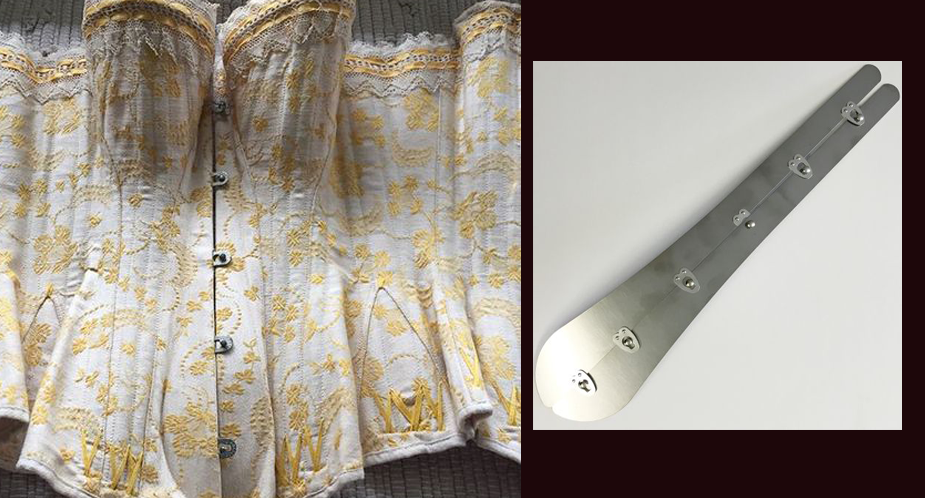…was heavily used in the 1880’s and ’90’s A busk had been used since the early 18th century to keep stays rigid in the front and to lift and separate the breasts. Through the early 19th century, it was still wooden and used for keeping the front flat and breasts lifted, but by they 1820’s when the metal busks were introduced, it became a key to opening and closing the corset. As it evolved, different shapes, materials, and thicknesses of metal were used for specific purposes (such as heavy duty and wide or double metal busks for working women who bent a lot).
By the 1880’s the new innovations of the metal “spoon busk” tipped in below the tummy so no line or ridge would show (and so it would hold in the tummies of large women, a favorite corset for today’s re-enactors for the same reason). It allowed the long and very smooth flat line required for the BIG silhouette, plus added strength and durability for the now, much more active woman.
(Photos: modern spoon busks are typically stainless steel and cost from $40-$90 depending on the metal used for the hooks – some are gold or brass and country of manufacture as well as thickness of the metal)

